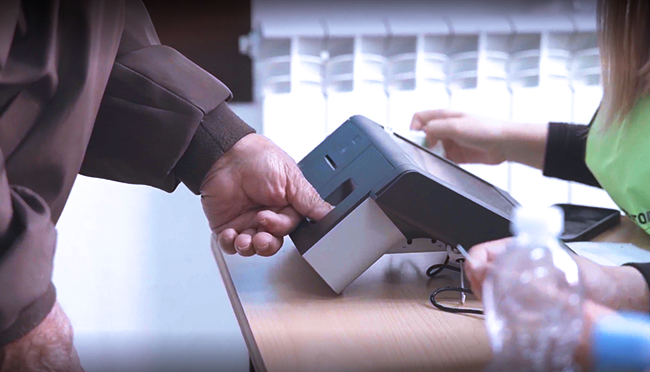
Free and fair elections invariably rely on accurate and reliable systems for registering, identifying, and authenticating voters. Once these systems are in place, election commissions must continually update and maintain their voter databases. So, how do they do that? Well, one of the significant advancements is biometric traits matching, such as fingerprints, face, and iris. When used in conjunction with automated matching of biographical data, it can deliver exceptional levels of accuracy and integrity.
As is always the case, the best voter authentication processes are multi-modal. This means using modern mechanisms for validating identity without having to rely on manual methods, such as validating the voter’s ID card or comparing their ID number with the number on the poll book.
Forward-designed authentication processes will include steps, each using a different type of verification. This can include biographical validation (such as ID number, name, surname, address, and/or birth date), and one or more biometric validation (such as facial recognition, iris scan, or fingerprint). These steps can be enhanced through the integration of artificial intelligence (AI) support. For instance, biographical information matching can be continually refined with the assistance of AI. Similarly, biometric matching can benefit from AI applications. Such implementations generally mitigate human error, leading to increased accuracy. Moreover, AI and its cousin, machine learning, are employed to identify anomalies and safeguard the integrity of voter databases.
Other new technologies include:
Smart Cards and RFID Technology
Smart cards with embedded chips containing voter information can be used for authentication. Radio-Frequency Identification (RFID) technology is often employed for contactless reading.
Mobile and Online Authentication
Some countries are exploring mobile applications for voter registration and authentication. This may involve using mobile devices to scan QR codes or employ biometric data for verification.
Blockchain Technology
Blockchain is being explored for its potential to enhance the security and transparency of electoral processes. It can be employed to ensure secure voter registration and facilitate the safeguarding of election results.
Multi-factor Authentication (MFA)
Using a combination of authentication methods, such as a smart card along with a biometric scan, adds an extra layer of security.
Regardless of which technologies are used, the evidence shows that successful implementations (and thus successful elections) require vendors with the knowledge, experience and professionalism. Kenya, for example, used nearly identical e-pollbook technology but different vendors in 2017 and in 2022. The 2017 election was voided by the country’s supreme court. The 2022 election was a success and is widely considered a model election for accuracy and speed.
In conclusion, the advent of revolutionary technology is transforming voter authentication, offering a wealth of reliable methods to ensure that only legitimate voters cast their ballots. Election authorities should stay at the forefront of these innovations, adopting multi-modal strategies for voter verification that combine biographical checks with one or more forms of biometric screening. Implementations that draw on AI and machine learning can further refine the accuracy and integrity of these processes. By committing to continuous improvement and innovation in voter authentication, democracies can protect the sanctity of the vote, bolster public trust, and uphold the bedrock principle of one person, one vote.
